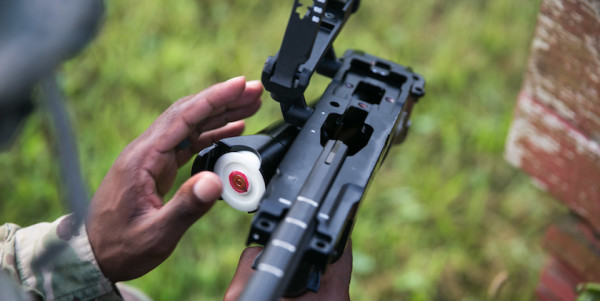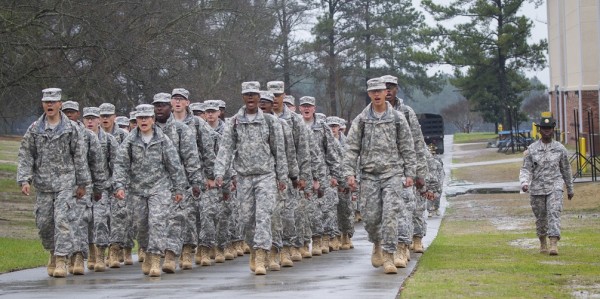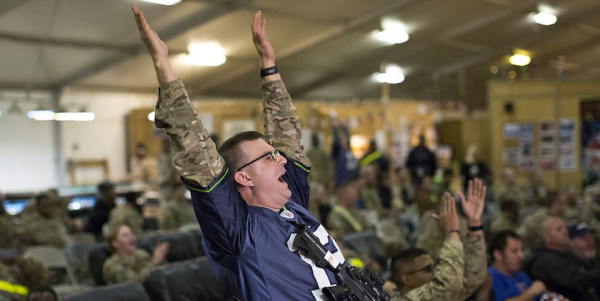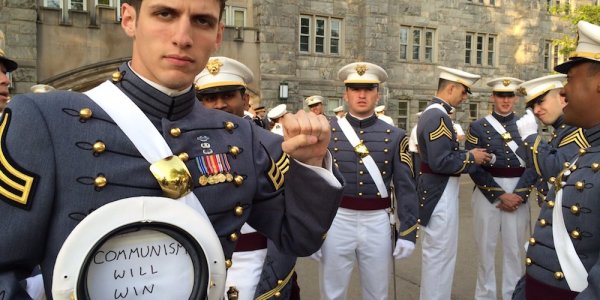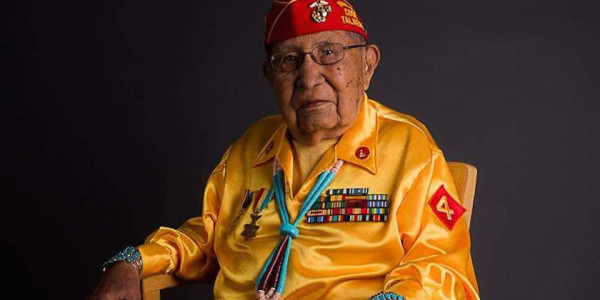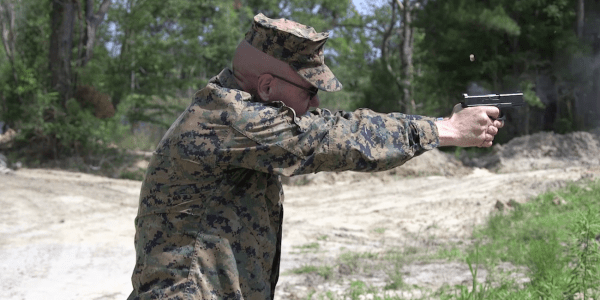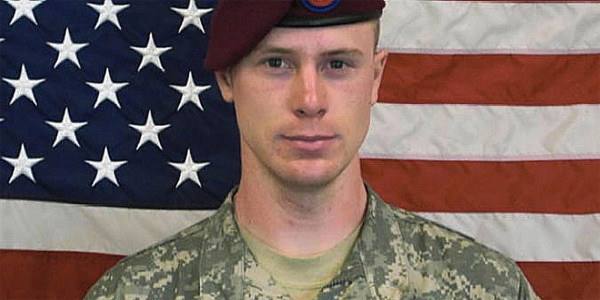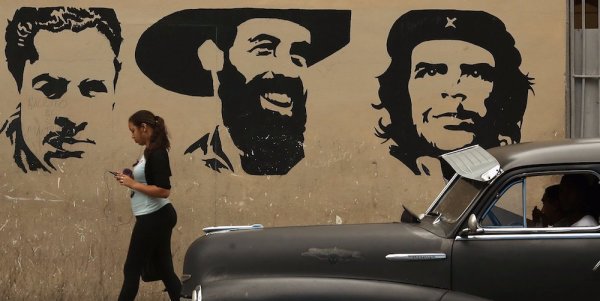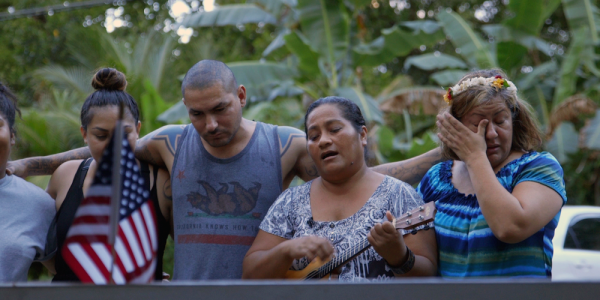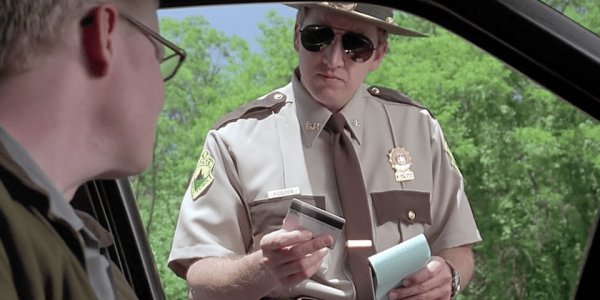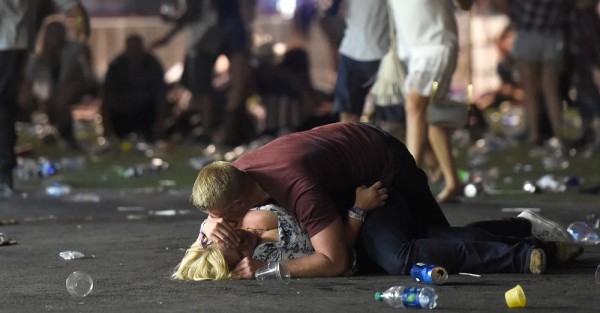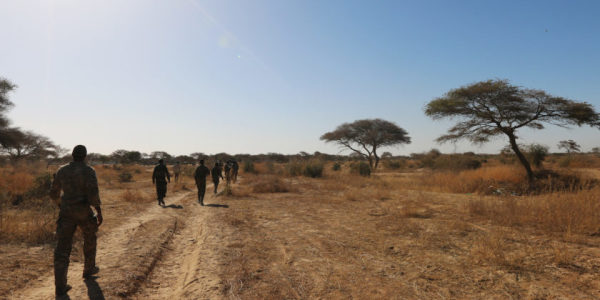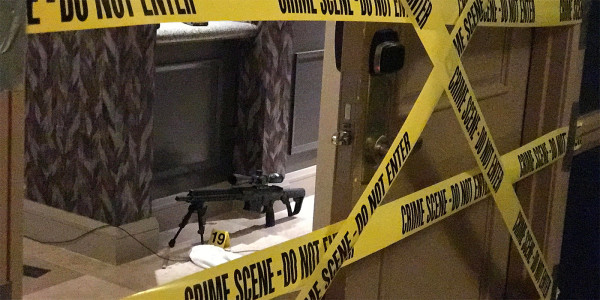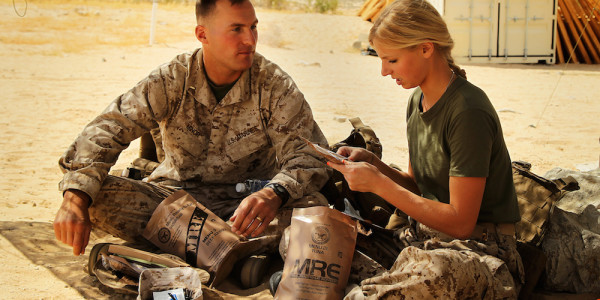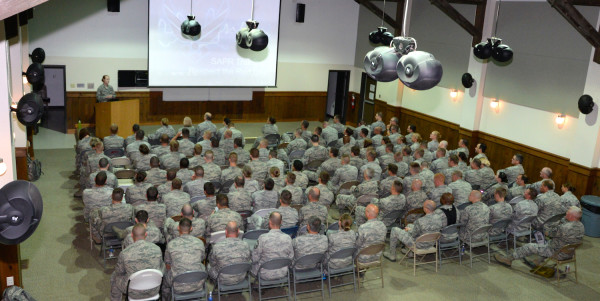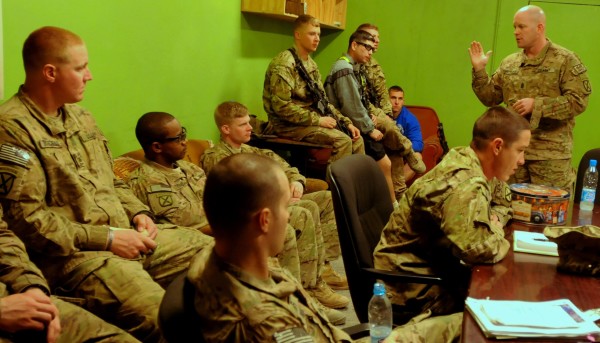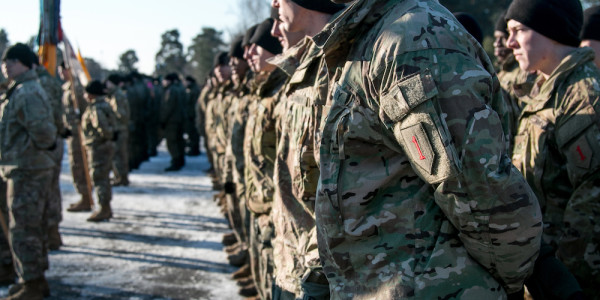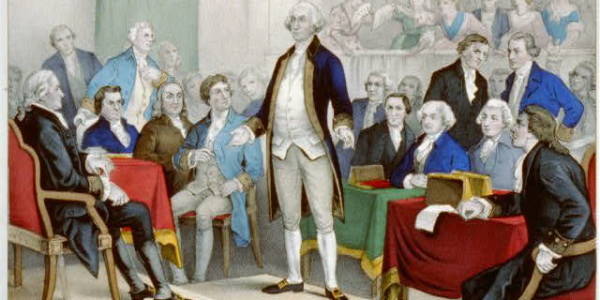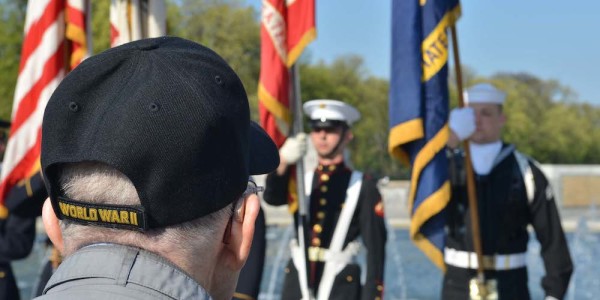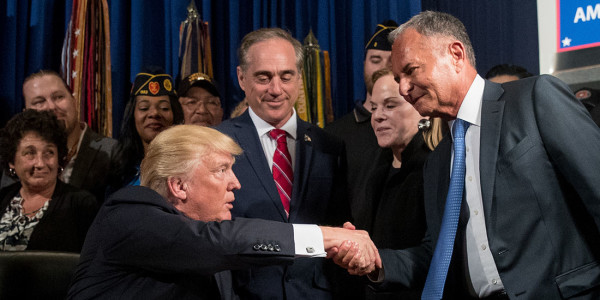When Sgt. Maj. of the Army Michael Grinston finished reading an independent committee’s review of Fort Hood — every single line of the 152 pages, he says — he flipped back to the first page and wrote three words at the top: Rage. Disappointment. Failure.
Rage, because noncommissioned officers were mentioned so frequently in the report and Grinston, who has “been an NCO for most of my career,” couldn’t fathom how “we get to that point where we didn’t take any action?”
Disappointment, because the NCO corps has “had this mantra for years” to enforce standards, yet standards seemed scarce, to say the least, at Fort Hood.
And failure, Grinston said, because the message of the report was personal.
“The failure, you know, kind of was mine,” Grinston told Task & Purpose on Wednesday, explaining that despite his heavy focus on the Army’s “This Is My Squad” messaging — an initiative centered around soldiers caring and looking out for one another — it hadn’t seemed to have made much of a difference to leaders at Fort Hood.
Grinston, along with Under Secretary of the Army James McPherson, sat down with Task & Purpose on Wednesday to discuss the bombshell report which detailed widespread failings throughout the chain of command to adequately address the welfare of soldiers at Fort Hood, Texas. They explained some of the immediate actions that were being taken, as well as the expectations they had for the Army moving forward.
What the committee found during their inspection of Fort Hood has shaken the Army to its core.
Among the findings was a damning indictment of the Sexual Harassment/Assault Response and Prevention (SHARP) program at Fort Hood, which was meant to assist and protect soldiers but instead fell flat on its face and left many of the women stationed there in a toxic environment with few (if any) reliable resources.
The committee said one woman gave an emotional summary of how women at Fort Hood feel:
“‘[T]his is us calling for help right now …we need help.’”
The committee also found a series of rookie mistakes from an under-resourced and inexperienced criminal investigation command (CID) office tasked with investigating the case of Spc. Vanessa Guillén, a soldier who was reported missing in April and later found dismembered, burned, and buried miles away allegedly at the hands of another soldier.

The report resulted in Army Secretary Ryan McCarthy taking disciplinary action against 14 Fort Hood leaders, including the former acting installation commander, a two-star general, and the regimental commander and command sergeant major of the 3rd Cavalry Regiment, all of whom were relieved.
McPherson’s immediate response to the report was similar to Grinston’s. He called it “gut-wrenching” and said he only got about halfway through it before having to momentarily set it down.
“It became emotional for me,” McPherson said. “Just reading, reading what those junior female soldiers were going through … the more I read it, the more I thought to myself, ‘This can’t be my Army. This just can’t.’”
But it is his Army. So he read it all the way through. Then he read it again.
What became clear to McPherson, as it has to several other senior leaders, is that the Army is facing a do-or-die moment, and the way leadership responds will chart the course forward for years to come. And when viewed through the context of the messaging the Army has been pushing for months, taking the right steps becomes even more dire.
The Fort Hood report comes at the end of a tumultuous year for both the nation and the Army, but also one in which the Army has relentlessly emphasized the importance of leaders getting to know their soldiers, and vice versa.
In a perfect “This is My Squad” world, soldiers will trust their NCOs enough to tell them they’ve been sexually assaulted. Soldiers will notice that their battle buddy has been acting a little off lately and have the kind of relationship that allows them to intervene and potentially save them from self-harm. Soldiers will, simply put, care about each other.
But that’s not the environment soldiers at Fort Hood have found themselves in.
Emma Moore, a researcher at the Center for a New American Security think tank, told Task & Purpose that she’s unimpressed with “This is My Squad” because it “allows leaders to say all the right things and not necessarily do the right things,” and doesn’t do enough to address the differences of what men and women experience in the Army.
“If they fundamentally have never considered the lived experience of women, then … they’re not going to be able to respect and understand the issues when they’re presented to them,” Moore said.
And while the report is focused specifically on the egregious failings at Fort Hood, it also speaks to a broader Army problem. Indeed, McPherson admitted that senior leaders recognize there are clearly “pockets in our Army” facing the same challenges as those outlined at Fort Hood.
Quite frankly, that’s the understatement of the century: Sexual assault and harassment throughout the Army — and to be sure, throughout the rest of the military — has been thoroughly documented. Reports of sexual assault have continued to rise, year over year, throughout the military.
The Army specifically had the same rate of sexual assault reports — 5.5 reports per every 1,000 soldiers — in 2019 as it did in 2018, its highest reporting rate ever recorded.

As one purported Army officer tweeted on Wednesday, if you’re angry for the first time, “you’re late.”
One female Army officer told Task & Purpose on the condition of anonymity that she was totally unsurprised by the report because it “echoes what I’ve been trying to tell my male leaders, peers, and my subordinates for years about the challenges that come with being a woman in the Army.”
“I’ve been sexually harassed by junior enlisted soldiers and by field grade officers alike,” the officer said. “If senior leaders read this report and still think this is a squad-level problem, they don’t understand their own peers or what’s happening in our units.”
A video clip of McCarthy telling CBS News’ Norah O’Donnell that he was surprised by “the high numbers of individuals that were concerned about reporting because of fear of retaliation from someone in an echelon above them” was met with swift backlash online from people asking how the Secretary of the Army could possibly be surprised by something so well-documented.
“Has he never been in, near, roundabout or even heard of the army before becoming secretary of it?” responded one person on Twitter, who claims to have served as an infantryman during Operation Enduring Freedom.
Moore said that on one hand, she understands why Army leadership could be surprised by this: it’s a cyclical problem of women learning they can’t trust the men around them and coming to the conclusion that they can’t raise those issues to them moving forward, resulting in leaders who rarely hear about the problem at all.
“If men don’t see gender-based violence towards women as an issue, then they’re not going to look for instances of it. And women will not feel comfortable coming to those individuals with their issues,” Moore explained.
“What it ends up doing is it results in silencing women, and women then only talk to each other to say ‘Watch out for this guy,’ or ‘Go report to this person.’ So it just further insulates the majority of leaders from understanding what’s going on because they don’t’ ask, they don’t look for it, and it kind of seems like they don’t care to, because they’re not interested.”
As Grinston tweeted on Thursday night, “Leaders DIDN’T see a problem because it didn’t affect them.”
The way McPherson sees it, the Army has found itself at a crossroads, and the way leaders decide to respond is crucial.
“I think we have an opportunity presented to us that maybe is presented once in a generation … a very narrow window has opened in which this could be the Army’s finest hour in our fight against sexual assault and sexual harassment.”
‘What did you know, and when did you know it?’

Much of what Army leaders hope to do will require a cultural change throughout the force. And changing the culture of the Army — much like changing anything else in the military — won’t happen overnight.
However, there are some immediate actions leaders are taking to help that change come to fruition.
For example, the Army has formed a new task force that will look at the 70 recommendations made by the independent panel to map out a game-plan for Army leaders. They have until March 1 to do so.
Maj. Gen. Donna Martin, the Provost Marshal General of the Army and head of CID, has been directed to investigate how the Fort Hood CID office got to the understaffed, under-resourced state the panel found it in.
Grinston said that the Army started a pilot assessment program this week at Fort Bragg, similar to the service’s new battalion commander assessment program, to help better assess NCOs as they progress in their careers.
“It’s not just about culture — those are fundamentally different ways of looking at selecting a leader so we don’t get the wrong leaders in the position,” Grinston said. “What I said the other day, no matter what policy you implement, if we continue with poor leadership the policy will never get implemented the right way.”
But one of the most important pieces of ensuring the Army has the right leaders in the right places rests with leaders themselves, McPherson explained. It doesn’t matter how good someone may be at the job — if they hurt their teammates, they’re gone.
“As a leader, you have to be willing to look at your top performer — your number one NCO, your number one captain — look them in the eye and say, ‘We appreciate very much what you’ve been doing for us. You’ve been a terrific performer. But you’re a sexual harasser. We no longer have a place for you in this unit. You’re fired,’” McPherson said. “That’s a major cultural change.”
That echoes the Army’s recent shuffling of its top-line priorities, which McCarthy announced in October. The service was officially, literally, making people their number one priority above readiness and modernization.
But the idea of being willing to show a high-performing soldier the door applies even if the person in question isn’t the offender, Grinston said, and has instead been overlooking or ignoring an environment in which soldiers aren’t safe.
That’s essentially what happened at Fort Hood, where the leaders determined to have allowed an environment that was “permissive’ of sexual assault and harassment have since been relieved.
“I think that’s the hard part … ‘It wasn’t your actions, it was the actions around you, and somehow that was allowed to fester,’” Grinston said. “‘And that’s the difficult part because you personally were performing exceptionally well. But those things around you were happening, and either you should have known or you allowed it.’”
What it comes down to, according to McPherson, is “what did you know, and when did you know it?”
And while that outlook has resulted in the relief or suspension of 14 Fort Hood leaders, it didn’t include the current installation commander, Lt. Gen. Pat White. Army Chief of Staff Gen. James McConville credited that decision on Tuesday to White’s 13-month long deployment to Iraq — during the time the Vanessa Guillén case was unraveling — which left Maj. Gen. Scott Efflandt in charge as the acting commander.
Efflandt will be allowed to retire if he chooses; McPherson explained that he will be made available for reassignment if McConville decides to do so, but he is retirement eligible. Col. Ralph Overland and Command Sgt. Maj. Bradley Knapp, the now-former commander and command sergeant major of the 3rd Cavalry Regiment, will both eventually go before separate boards that will decide if they’re allowed to remain on active duty.
That same question of “what did you know” could eventually be asked of former Fort Hood commanders. The report, after all, wasn’t focused on just the past year, and said that it was “well-publicized that the risk for sexual assault for women at Fort Hood was persistently high before and during the review period.”
Chris Swecker, one of the panel members, told reporters on Tuesday that the panel “looked back as early as 2014,” and did not pin accountability on any one specific general officer because it wasn’t “an act of commission, these were acts of omission.”

In other words, the responsibility for Fort Hood’s deteriorated condition does not necessarily lie with the inaction of just one commander. And the responsibility of why the Army’s culture is the way it is does not lie with just one senior leader; it’s an institutional problem.
As Moore, the CNAS researcher, pointed out, McCarthy was the undersecretary for two years before he became secretary in 2019.
“Only with an immense amount of bad press was an investigation launched into outcomes at Fort Hood, despite there being known bad metrics and an insidious culture of gender discrimination,” she said. “To have leaders who are civilian leaders, who come from the Army, who have also been leaders for a number of years, it’s not inspiring that now we are investigating SHARP.”
McPherson alluded to that sense of wider responsibility on Wednesday when he gave an example of how he personally failed to recognize the red flags at Fort Hood — a rather rare moment of candor from a military leader.
He explained how every year, he receives the annual Army Crime Report. And typically, he reads the executive summary and then puts it aside. The 2019 report was no different, but when he received the Fort Hood report later, he immediately connected the dots.
“I dug that off the shelf and I opened it up and I said ‘Where’s Fort Hood in here?’ And I actually went beyond the executive summary, ‘Where’s Fort Hood? Look at that, Fort Hood’s number one.’ I felt responsible for that,” McPherson said.
“I felt that it was incumbent upon me as the undersecretary to go through that report with a fine-toothed comb and say, ‘Fort Hood’s number one. I need to pick up the phone and ask the Provost Marshal what he or she is doing with respect to the crime rate at Fort Hood.’ I didn’t do that. .. That was incumbent upon me to do that, that was incumbent upon every leader in the United States Army to have done that.”
‘We’re not going to fail again’
Despite the Army’s many challenges, Grinston still believes the service is “the greatest Army in the world,” joking that he’s still trying to convince his teenage daughter to go to West Point.
But others in the Army have a sense of hesitant optimism as well towards the way ahead. Maj. Gen. Tammy Smith, who works on the Army’s Quality of Life policy, told Task & Purpose she was “heartened by the social media discussions” she’s seen in the wake of the report.
“Soldiers sincerely want to contribute to a positive command climate and to learn the tools and have the top cover to take on people in the formation who aren’t totally on board with the same values,” Smith said.
Maj. Stephanie Worth told Task & Purpose that while she is “heartbroken by the events that transpired at Fort Hood,” she’s grateful for Army leaders taking the time to re-evaluate “how to best support soldiers.”
But Grinston added that ultimately, the Fort Hood report serves as a reminder that while the Army has built up “years of respect … it can go away at a moment’s notice.”
He also apologized to the soldiers at Fort Hood who “have had to endure this,” and to all the soldiers who “felt they couldn’t trust their NCOs to come forward.”
“We’re going to do better,” he vowed.
McPherson echoed Grinston’s thoughts, though he also acknowledged the work the Army would need to do to win back not just the trust of its soldiers, but of those soldiers’ families, and of future soldiers’ families who may be hesitant now to encourage their loved one to raise their right hand.
“That is a sacred trust, that these mothers and fathers are trusting us with their sons and daughters,” he said. “Vanessa Guillén’s mom and dad gave us Vanessa. The chief talked to Vanessa’s mom yesterday, he’s talked to her several times … and she told them both, ‘Vanessa wanted to come into the Army when she was 10 years old, and I was not in favor of that. I was afraid for her. But she had a resolve, that was her dream, and I wasn’t going to keep her from that dream.’”
He paused: “We failed that mother and father. And we failed Vanessa Guillén. And [the] leadership of this Army needs to resolve that we’re not going to fail again.”


